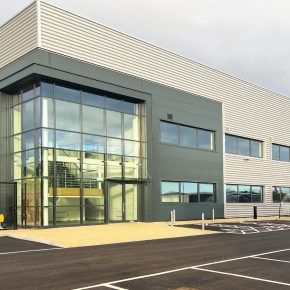
Limble CMMS CEO outlines maintenance tips
The author of this article is Bryan Christiansen, founder and CEO at Limble CMMS, (pictured). Limble is a modern, easy to use mobile CMMS (Computerised Maintenance Management System) software that takes the stress and chaos out of maintenance by helping managers organise, automate, and streamline their maintenance operations.
“We have to stop working early today as that asset broke down. That’s the second time this week.”
“The maintenance budget is over again this quarter. Isn’t anyone watching the costs?”
“Sorry, that piece of equipment is unavailable while we wait for the spare parts to come in.”
If this is what you hear at your workplace, there is a good chance your maintenance section needs some help. A tour of the maintenance office could be very telling.
Is it covered with yellow sticky notes reminders? Are there clipboards full of excel schedules everywhere? Maybe tools are unorganised and laying around the shops.
All of these are the signs of a maintenance operation lacking structure and organisation. Not only does everything look inefficient and cluttered, that’s exactly how it operates.
When there aren’t good processes in place, work orders get lost, supplies run out, and equipment breaks more frequently. Repairs are made reactively, and everyone is working in a panic mode.
That’s not how a maintenance section should run. In fact, most of the time the maintenance staff should be pretty relaxed working on routine preventive maintenance (PM) tasks like changing air conditioning filters or monitoring equipment performance.
In well-run operations, facility managers take time to plan work or improve system efficiency instead of running from emergency to emergency.
But to get the steadiness and structure found in well-organised maintenance sections, there needs to be a solid foundation of good processes in place. That foundation is an effective CMMS (Computerised Maintenance Management System).
CMMS software brings together all the sticky notes, emailed repair requests, and spare parts lists into one central platform that lets building managers organise all of the maintenance work in one place.
No more trying to remember when to reorder materials, no more blown budgets, and a big reduction in emergency shutdowns because all of the repair history, maintenance schedules, and work orders are organized within the CMMS.
However, some CMMS solutions may be lacking certain features or they could be really complicated to use so make sure you know how to choose the best maintenance software that is a good fit for the construction industry and your organisation.
Here are some of the capabilities you might be interested in.
To put an end to reactive repairs and start focusing on PM, a CMMS can automatically generate PM work orders for each piece of equipment. With regular PM, staff can keep equipment running efficiently and fix small maintenance problems before they become catastrophic failures. Non-emergency shutdowns can be planned so site managers can minimize the amount of time important assets are unavailable.
If you have the budget for it and a CMMS that can communicate with condition-monitoring equipment, you might even look to implement predictive maintenance and completely optimise your maintenance operations.
On top of everything mentioned, the biggest advantage of a CMMS is the sheer amount of data it can save and manage for you. It helps you:
- track where your assets are
- how many spare parts you have available
- which technicians are able to pick up emergency tasks
- what kind of maintenance work has been done, still needs to be done, and what kind of work is currently in progress
- calculate maintenance costs
All of this data helps you make an effective maintenance schedule that doesn’t interfere with the construction process and helps you plan reorders and keep adequate parts to avoid emergency shipping charges and extended equipment downtime.
Implementing the right maintenance software for your business doesn’t have to be long nor expensive, but you need to make sure you choose a reliable solution that will help you transform your maintenance shop into the well-run and organised operation it should be.
Latest news

2nd April 2025
FIT Show 2025 Launches Innovative Marketplace Feature to Enhancing Value for Installers
FIT Show, the UK’s leading event for the window, door, flat glass, hardware, and roofing industries, is excited to announce the launch of a brand new Marketplace feature at its upcoming 2025 event (Birmingham NEC, 29 April – 1 May).
Posted in Architectural Ironmongery, Articles, Building Industry Events, Building Industry News, Building Products & Structures, Doors, Exhibitions and Conferences, Glass, Glazing, Hand Tools, Innovations & New Products, Plant, Equipment and Hire, Power Tools, Restoration & Refurbishment, Retrofit & Renovation, Roofs, Seminars, Training, Windows
2nd April 2025
Hi-spec deployment of EJOT Colorfast at new Birmingham logistics park
EJOT Colorfast fasteners have been used extensively in the construction of eight new high-specification warehousing and logistics buildings at the Urban 8 Logistics Park in King’s Norton, Birmingham.
Posted in Articles, Building Industry News, Building Products & Structures, Building Systems, Case Studies, Facades, Restoration & Refurbishment, Retrofit & Renovation, Roofs, Walls
2nd April 2025
SWA member delivers ‘fresh Hope’ for university’s Sustainable Building department
A detailed contract to restore an iconic Art Deco building in the heart of Birmingham’s Jewellery Quarter was carried out by Steel Window Association member, The Window Repair Company (Northwest) Limited.
Posted in Articles, Building Associations & Institutes, Building Industry News, Building Products & Structures, Building Systems, Case Studies, Glass, Glazing, Restoration & Refurbishment, Retrofit & Renovation, Steel and Structural Frames, Sustainability & Energy Efficiency, Windows
1st April 2025
Gilberts Takes Thermal Comfort to New Heights
Gilberts Blackpool is continuing to build on its reputation as a pioneer with the unveiling of ThermaAstute™ – the most extensive range of thermally sensitive diffusers in the market.
Posted in Air Conditioning, Articles, Building Industry News, Building Products & Structures, Building Services, Facility Management & Building Services, Heating, Ventilation and Air Conditioning - HVAC, Innovations & New Products, Restoration & Refurbishment, Retrofit & Renovation, Sustainability & Energy Efficiency
 Sign up:
Sign up: